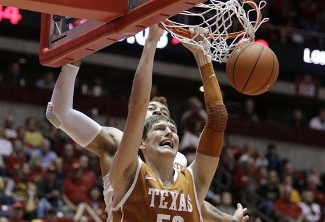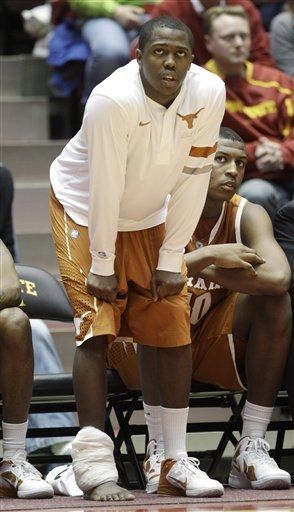Iowa State Cyclones 77, Texas Longhorns 71
The old adage holds that the best thing about freshmen is that they eventually become sophomores. Fans of the Longhorns can surely identify with that statement after Texas dropped their conference opener to Iowa State last night in Ames. Texas was without the services of J’Covan Brown down the stretch, leaving the six-man freshman class and Clint Chapman in charge of a comeback bid that fell just short.
Things looked promising for Texas when Iowa State big man Royce White went to the bench with two fouls just minutes into the game. But instead of cratering, the Cyclones built a ten-point halftime lead on the strength of 75% shooting from behind the arc. The Longhorns came out aggressive in the second half, erasing that lead in just minutes, fueled by Brown’s 19 points. Unfortunately, the junior guard injured his ankle as he finished a nice spin move in the lane, and the Cyclones were able to quickly rebuild a lead that they would cling to until the final buzzer.
What looked good

Clint Chapman had the best game of his career
(Photo credit: Charlie Neibergall/Associated Press) 
J’Covan Brown was sidelined by an ankle injury
(Photo credit: Charlie Neibergall/Associated Press) |


